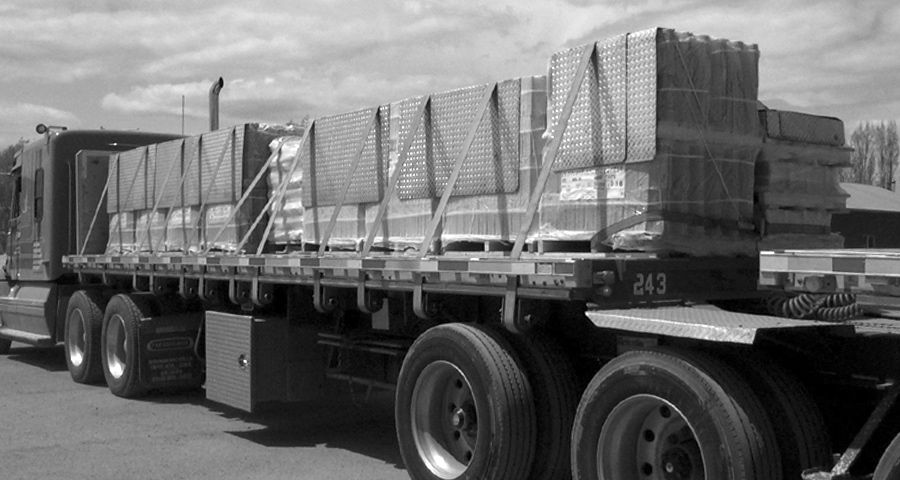Review Questions - Click On The Picture To Begin...

An anchor point is defined as:
- The load carrying area of a truck, trailer, or intermodal container.
- Part of the structure, fitting, or attachment on a vehicle or cargo to which a tiedown is attached.
- A rail along the side of a vehicle that protects the side of the vehicle from impacts.
- A vertical barrier across the front of the deck of a vehicle to prevent forward movement of cargo.
Quote From The CDL Manual:
Anchor point:
Part of the structure, fitting, or attachment on a vehicle or cargo to which a tiedown is attached.
Next
Which of the following is not a reason why loads should be secured?
- Prevent damage to the cargo
- Make it look pretty
- Avoid fines and citations
- Prevent loss of load
Quote From The CDL Manual:
Why?
- Loss of life
- Loss of load
- Damage to the cargo
- Damage to the vehicle
- Issuance of citations/fines to driver/carrier
- The vehicle being placed Out-of-Service.
- A crash
Prev
Next
In cargo securement, a wedge is defined as:
- The depression formed between two cylindrical articles when they are laid with their eyes horizontal and parallel against each other.
- A rail along the side of a vehicle that protects the side of the vehicle from impacts.
- A tapered piece of material, thick at one end and thin at the other, used to help keep cargo from moving.
- A short piece of material, usually wood, nailed to the deck to reinforce blocking.
Quote From The CDL Manual:
Wedge:
A tapered piece of material, thick at one end and thin at the other, used to help keep cargo from moving.
Prev
Next
What types of freight need to be secured properly?
- Intermodal containers.
- Hazardous materials.
- All freight should always be properly secured while driving.
- Equipment used for vehicle operation.
Quote From The CDL Manual:
-
Any cargo and dangerous goods/hazardous materials, including:
- All general freight.
- All equipment carried for vehicle operation.
- Intermodal containers and their contents.
- Some specific commodities have additional or different securement requirements (see later sections of this Handbook).
- Additional requirements under separate regulations may also apply for transportation of certain types of dangerous goods or hazardous materials.
Cargo
Prev
Next
The load carrying area of a truck, trailer, or intermodal container is referred to as the:
- Well
- Deck
- Bulkhead
- Headboard
Quote From The CDL Manual:
Deck:
The load carrying area of a truck, trailer, or intermodal container.
Prev
Next
The North American Cargo Securement Standard cover vehicles weighing:
- 26,001 lbs
- Over 4,500 lbs
- Less than 10,000 lbs
- Over 10,000 lbs
Quote From The CDL Manual:
North American Cargo Securement Standard
What does the Standard cover? (Section 1.1)
- Commercial vehicles (including a combination of vehicles) that are operated on a highway and have a gross vehicle rating over 4,500 kg (10,000 lb.)
Vehicles
Prev
Finish
Please select an option





 Related Cargo Securement Terms That Every Driver Should Know:
Related Cargo Securement Terms That Every Driver Should Know: 



 TT On Facebook
TT On Facebook